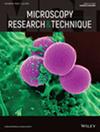Photochemically Activated Microbubble Emulsion, Nd: Yap Laser, and Cerium Oxide Nanoparticles as Canal Disinfectants on Push-Out Bond Strength of Sealer to Root Dentin, Smear Layer, and Antibacterial Efficacy
Abstract
Effect of different root canal irrigation regimes microbubble emulsion (MBE) via riboflavin photosensitizer (RFP), cerium oxide (CeO2) nanoparticles (NPs), and Nd: YAP laser on antibacterial efficiency, microhardness (MH), smear layer (SL) removal efficacy, and push-out bond strength (PBS) of AH plus sealer to canal dentin. Sixty single-rooted teeth were selected, disinfected, and categorized into four groups based on the type of disinfection. Following disinfection, a pair of samples were randomly selected and visualized under scanning electron microscope (SEM) for SL evaluation. Three samples from each disinfection group were mounted on a Vickers MH tester for hardness testing. A brain–heart infusion (BHI) agar plate was inoculated with a single colony of Enterococcus faecalis ( E. faecalis), and their survival rate was measured following different disinfecting regimes. The remaining samples were filled with gutta-percha (GP) and sectioned to evaluate PBS via universal testing machine (UTM), followed by failure analysis. Data were analyzed using analysis of variance (ANOVA) and Tukey's post hoc test. The survival rate of E. faecalis was lowest for Group 3 (0.11 CFU/mL) with the highest MH values (49.72 ± 1.02 N/mm2). The PBS was highest for Group 3 cervical (11.54 ± 0.49 MPa) and middle third (11.12 ± 0.50 MPa). SL removal efficacy was comparable in groups 3 and 4 at the coronal and middle third. The application of CeO2NPs as a canal irrigant in conjunction with EDTA resulted in enhanced bond values, demonstrating superior SL removal capabilities. This type of disinfection notably enhances the MH of canal dentin while demonstrating significant sterilization efficacy against E. faecalis .

 求助内容:
求助内容: 应助结果提醒方式:
应助结果提醒方式:


